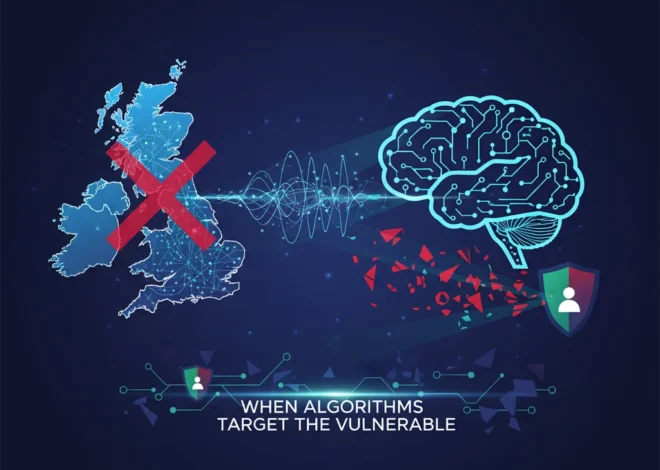
Your Snack Could Get You Arrested: When AI-Powered Security Goes Terribly Wrong
Imagine this: you’re sixteen years old, walking home after a game of football, munching on a bag of Doritos. Suddenly, you’re surrounded by armed police, ordered to the ground, and handcuffed. Your crime? An algorithm, miles away in a digital cloud, decided your bag of crisps looked like a handgun. This isn’t a scene from a dystopian sci-fi movie. This was the terrifying reality for Taki Allen, a 16-year-old from London, whose afternoon snack triggered a full-blown armed police response, all thanks to a piece of flawed artificial intelligence.
The incident involving Taki Allen is more than just a bizarre headline; it’s a stark, real-world manifestation of the ethical tightrope we walk as we integrate AI and automation into critical areas of society like public safety. For developers, entrepreneurs, and tech professionals, this story serves as a critical case study. It’s a flashing red warning light on the dashboard of innovation, forcing us to ask difficult questions about the software we build, the data we use, and the real-world consequences of a single line of imperfect code.
In this post, we’ll dissect this AI failure, explore the systemic risks of automated policing, and discuss how the tech community—from startups to enterprise giants—can build a more responsible and reliable future for artificial intelligence.
The Anatomy of an Algorithmic Misfire
So, how does a bag of Cool Ranch Doritos get mistaken for a deadly weapon? The answer lies in the complex, yet fallible, world of computer vision, a field of artificial intelligence that trains computers to interpret and understand the visual world. The software used in these security systems is powered by machine learning models, which are not programmed with explicit rules but rather “trained” on vast datasets of images.
A model designed to detect firearms would be fed millions of images of guns of all shapes and sizes, from every conceivable angle, in various lighting conditions. Over time, it learns to recognize the patterns, shapes, and textures associated with a weapon. The problem is, the real world is infinitely more complex than any training dataset. Here’s what likely went wrong:
- Ambiguous Shapes and Textures: A crumpled, reflective crisp packet can create unusual shapes and glints of light. To a computer vision algorithm, the metallic sheen of the foil, combined with a dark, angular shape held in a person’s hand, could have checked enough boxes to match the statistical profile of a handgun.
- The Confidence Score Dilemma: AI detection systems don’t typically give a simple “yes” or “no” answer. They generate a “confidence score”—a percentage likelihood that an object is what it’s looking for. The system might have flagged the Doritos packet as a “gun with 70% confidence.” The critical question then becomes: what is an acceptable threshold for deploying an armed police unit? Is 70% enough? 50%? This is an ethical and operational decision, not just a technical one.
- Environmental Factors: Poor lighting, camera resolution, motion blur, and distance can all degrade the quality of the input data, forcing the AI to make a judgment call with incomplete information.
This incident highlights a fundamental challenge in machine learning: the “edge case.” An edge case is a rare or unforeseen scenario that the model wasn’t adequately trained for. For a teenager eating a snack, this is a quintessential edge case, yet its consequences were profoundly serious.
Caught in the Crossfire: Why Europe's Tech Future is Hostage to the US-China Mineral War
The False Positive: An Annoyance in Your Inbox, a Catastrophe on the Street
In the language of data science, what Taki Allen experienced was a “false positive.” A false positive occurs when a test or algorithm incorrectly indicates the presence of a condition when it’s not actually there. We encounter them all the time: an important work email lands in your spam folder, or a cybersecurity system flags a legitimate piece of software as malware.
While often a minor inconvenience, the stakes of a false positive skyrocket depending on the application’s context. The gap between a mislabeled email and a misidentified teenager is a chasm of real-world harm.
To better understand this, let’s compare the impact of AI errors across different domains:
| AI Application | False Positive (Detecting something that isn’t there) | False Negative (Failing to detect something that is there) |
|---|---|---|
| Email Spam Filter | A legitimate email is marked as spam. (Low Impact: Annoyance) | A spam email gets into your inbox. (Low Impact: Annoyance) |
| Medical Imaging AI | A healthy patient is told they might have a tumor, causing immense stress and requiring further tests. (High Impact: Emotional/Financial) | A patient’s tumor is missed, delaying life-saving treatment. (Critical Impact: Life-threatening) |
| Public Security AI | An innocent person eating crisps is identified as having a gun, leading to a potentially fatal police encounter. (Critical Impact: Life-threatening) | A real weapon is missed by the system, failing to prevent a potential crime. (High Impact: Public Safety Risk) |
This table illustrates the immense responsibility that falls on the shoulders of developers, data scientists, and the startups deploying these high-stakes AI solutions. The drive for innovation cannot come at the expense of human safety and civil liberties. The rapid adoption of AI by law enforcement, which has seen a significant increase in recent years, makes this conversation more urgent than ever.
Algorithmic Bias and the Black Box Problem
The Doritos incident, while alarming, only scratches the surface of deeper, more systemic problems with AI in law enforcement. Beyond simple object misidentification, the greater fear is algorithmic bias.
AI models learn from the data they are given. If that data reflects existing societal biases, the AI will not only learn those biases but can also amplify them at a massive scale. For example, extensive research from institutions like the U.S. National Institute of Standards and Technology (NIST) has shown that many facial recognition algorithms exhibit significant racial and gender bias, performing far less accurately on women and people of color (source). When such a biased system is used for policing, it can lead to disproportionate surveillance and false accusations against already marginalized communities.
Compounding this is the “black box” problem. Many advanced machine learning models, particularly deep learning networks, are so complex that even their creators cannot fully explain why they made a specific decision. The AI saw a gun, but *why*? Which pixels, which shapes, which shadows led to that conclusion? Without this transparency, it’s impossible to properly audit these systems, identify their flaws, or allow an accused person to meaningfully challenge the “algorithmic witness” that pointed a finger at them.
The Chip War Just Shifted Gears: Why Your Next Car is on the Geopolitical Frontline
The global market for AI is exploding, with projections estimating it will reach nearly $2 trillion by 2030 (source). As more venture capital flows into AI startups focused on security and surveillance, the pressure to deploy quickly can overshadow the need for ethical rigor and painstaking validation.
The Way Forward: Building Responsible and Trustworthy AI
The Taki Allen case should not be a reason to abandon artificial intelligence altogether, but it must be a catalyst for a fundamental shift in how we develop and deploy it. For every tech professional, from the intern writing their first line of code to the CEO signing a major contract, here are the principles we must champion:
- Data Diligence is Paramount: The “garbage in, garbage out” principle is gospel in machine learning. We must invest heavily in creating diverse, representative, and meticulously vetted training datasets that account for a vast array of edge cases. This means including images in different weather, lighting, and contexts, and actively working to de-bias the data from the start.
- Human-in-the-Loop as a Mandate: For any high-stakes decision, AI should be a tool to assist, not replace, human judgment. An AI flag for a potential weapon should prompt a review by a trained human analyst who can assess the context before triggering an armed response. This is a critical safeguard against the brittleness of pure automation.
- Embrace Explainable AI (XAI): The industry must move away from opaque “black box” models. We need to invest in and demand XAI techniques that allow systems to explain their reasoning. If an AI flags an object, it should be able to highlight the specific features that led to its conclusion, enabling effective oversight and debugging.
- Red Teaming and Adversarial Testing: Before a single line of code is deployed, systems should undergo rigorous “red teaming,” where experts actively try to fool the AI. Can a water pistol be mistaken for a rifle? Can a shiny crisp packet be mistaken for a gun? This adversarial testing is crucial for uncovering vulnerabilities before they cause real-world harm.
The infrastructure that powers this—largely based in the cloud—offers incredible scalability but also centralizes risk. A flawed model deployed as a SaaS product can proliferate its mistakes to hundreds of clients instantly. This places an even greater burden on providers to ensure their technology is not just innovative, but fundamentally safe and equitable.
The Digital Ghost: Why OpenAI's Ban on MLK Deepfakes Is a Defining Moment for AI Ethics
Conclusion: From Cautionary Tale to Constructive Action
Taki Allen was eventually released after police realized the ridiculous error, but the experience of being handcuffed at gunpoint over a snack will undoubtedly stay with him. His story is the human cost of an algorithm’s mistake. It’s a powerful reminder that the code we write in the sterile environment of our IDEs has profound and lasting consequences in the chaotic, unpredictable human world.
The promise of AI to enhance public safety is real, but so are its perils. The path forward requires a new compact between innovators and society—one built on transparency, accountability, and a relentless focus on the human impact of our technology. Let the story of a teenager and his Doritos not be just another fleeting headline, but a turning point in our approach to building a future where innovation serves humanity, without endangering it.


